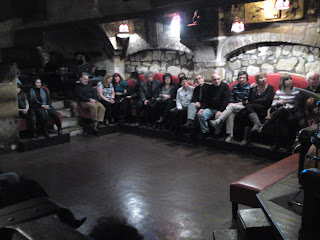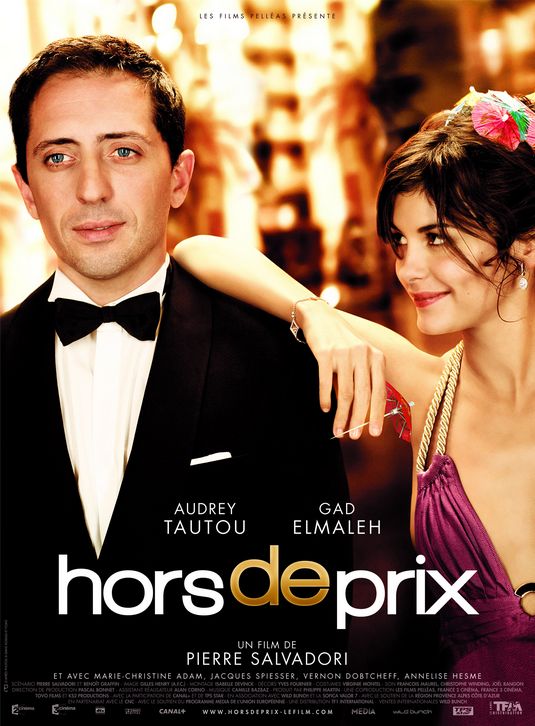After hearing about the jazz bar that Heimunn attended with her host family, I was anticipating a chic club with fancy cushions and elegantly dressed Parisians while on my way to a jazz concert at Caveau de la Huchette. However, when I turned onto a lively street in the Latin quarter, I realized that it would probably be a little different. After escaping from a drunk guy who asked me if I would go to a club with him, I found the entrance and followed the sound of the music that was coming from the basement. I entered a room that was supported by aged stone walls and stone arches that reached almost halfway from the ceiling to the floor. There were some slightly dusty lanterns attached to the walls and rows of long wooden benches extending from the bottom of the curved staircase. A possibly unintentional addition to the cave-like effect was the echoing sound of water droplets leaking from a pipe. The scène looked like it was built in the middle ages. Indeed, I found out that the room has been kept in its authentic state since the around the 16th century, when it was used as a meeting place for the Rose Croix and the Templars. Two secret passages led out of the cave during the Revolutionary period, when it was transformed into a courtroom and site for exécutions. In the 20th century, it was the first place where jazz was played and became the known as the most popular jazz bars in Paris.
Today, Le Haveau de la Huchette is still considered among the best in the city, and its likely the favorite among many Parisians. I discovered throughout the performance that the setting was a major part of the overall experience. The music was amplified by the reflection off of the stone arches, and everybody was close enough to the band to catch every detail of the performance. I watched the bassist and guitarist when they held their ears near the instruments to tune them between songs. I could see the pianists’ fingers moving adeptly around the keyboard, playing mostly relatively simple chords with his left hand and a lively melody in the right hand. He finished his solo with a sequence that traversed the higher octaves of the piano and came back down near middle C. The audience applauded after each of the musicians’ solos, which were good but not outstanding. Similarly, I enjoyed the songs that the band played over the course of the performance without being overwhelmingly impressed. My criticisms are that I couldn’t hear the pianist very well except for during the solos, and one of the solos was accompanied by the drummers’ sharp pattering rhythm that was a little distracting.
During the last song, a couple got up and started to swing dance in the large open space in front of the band. They skillfully spun and glided around the dance floor, bringing more engery to the animated ambiance. Overall, the music provided a relaxing break from all the work I’ve had recently, and I was excited to be in a jazz bar for the first time. I was thankful for the opportunity to go out and listen to music on a Monday night, when I would normally be working on an Econ problem set if I were back at Stanford. Also, it might be difficult to find a jazz club in California in a cave dating from the middle ages.

























